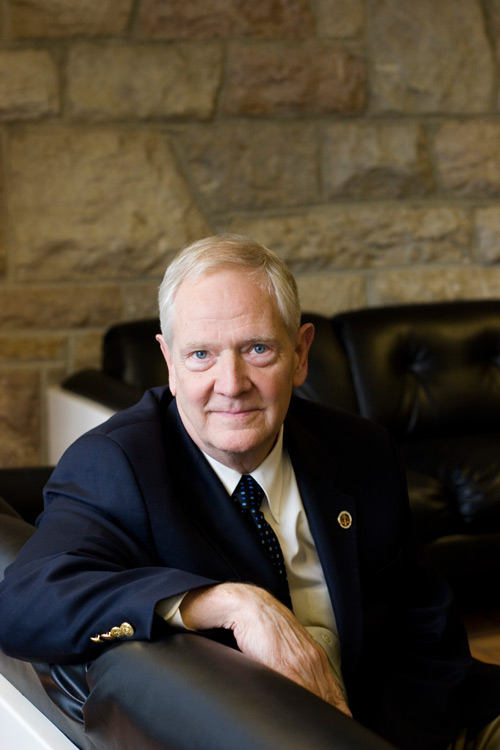New structure proposed for College of Medicine
The College of Medicine at the University of Saskatchewan is planning for the future. A concept paper is being presented to faculty, staff and students this week and will be discussed internally over the next several weeks.
By Colleen MacPherson The concept, presented by the dean of the college, Dr. William Albritton, and Provost and Vice-President Academic Brett Fairbairn, describes structural changes including the creation of three new divisions intended to support increases in research performance, clearer accountability for clinical instruction and streamlined service to the health regions. While the college remains fully accredited, the new structure is also about ensuring accreditation for the long term.
The concept, presented by the dean of the college, Dr. William Albritton, and Provost and Vice-President Academic Brett Fairbairn, describes structural changes including the creation of three new divisions intended to support increases in research performance, clearer accountability for clinical instruction and streamlined service to the health regions. While the college remains fully accredited, the new structure is also about ensuring accreditation for the long term.
"Of all of the pillars of work within the college of medicine – teaching, research, administration and clinical service – the one that needs the most urgent attention for our survival as an academic institution is research," said Albritton.
Research drives international reputation for the university as well as the province, said a U of S media release. Research-intensive medical schools create more active and vibrant medical communities that in turn attract outstanding faculty and physicians. This is what is needed in the long term to ensure an exceptional academic and medical service infrastructure in Saskatchewan.
While changes may occur at the college, undergraduate and postgraduate (resident) medical students remain a top priority and are not expected to experience any disruption. Saskatchewan citizens are not likely to notice any change in their interactions with the university or their local health-care providers. The university will work with government and the health regions to ensure the continuity of health care for the people of Saskatchewan.
"The College of Medicine is a priority for the university and for the people of Saskatchewan," said Fairbairn. "The college has some challenges to face and together we have some decisions to make. The government has done its part; now it is time for the university to work toward our own ambitious goals."
This is a long-term vision, said the release. A concentrated period of consultation will be followed by approval and implementation, which may take many months. Over time, the university expects these improvements to produce an influx of outstanding faculty, students, resident doctors and physicians for the university and the province.

